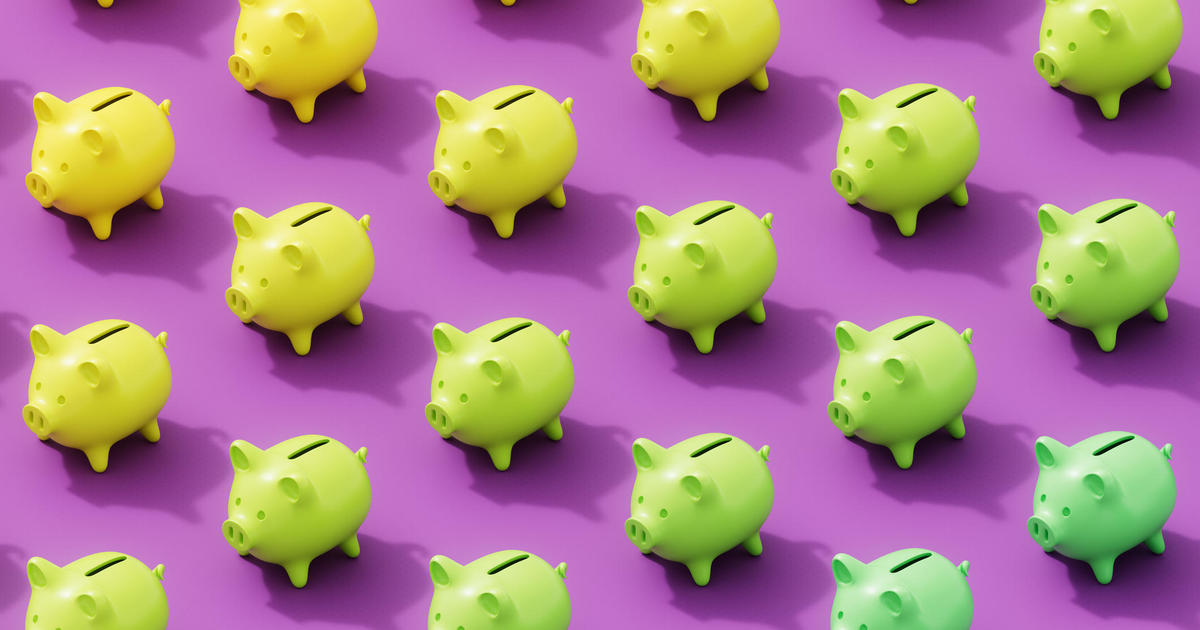Why you should split your funds between a CD and high-yield savings account now
In today's inflationary environment, it can be difficult to decide where you'll store your savings. No matter where you choose to do so, it's important that your money earns a return that's equal to inflation or higher. Your savings will lose buying power if your returns are any lower than the current inflation rate (3.5%).
Two options to consider that can outpace inflation right now are certificates of deposit (CDs) and high-yield savings accounts. But, these are different types of accounts with very different features. And, with uncertainty surrounding consumer interest rates, it may be wise to split your funds between the two. That's especially true with the Federal Reserve's Federal Open Market Committee meeting - the meeting at which the Fed discusses monetary policy - set for April 30.
Compare leading high-yield savings accounts now.
Why you should split your funds between a CD and high-yield savings account now
Are you torn between a CD and a high-yield savings account? "Consumers can split their savings between CDs and high-yield savings accounts to enjoy the best of both worlds," explains Derek Miser, investment advisor and CEO at the financial planning firm, Miser Wealth Partners. Here are three benefits of doing so now:
There's no telling where interest rates are headed
Although the Federal Reserve was expected to reduce its federal funds rate in 2024, stubborn inflation and robust jobs growth have tampered those expectations. With uncertainty surrounding interest rates, splitting your funds between a CD and high-yield savings account may prove to be an effective savings strategy.
"By consumers investing their savings in both CDs and high-yield savings accounts, they're able to optimize their savings strategy," says Miser. "If interest rates change, having savings in both types of accounts can help mitigate risk by ensuring you're not overly exposed to fluctuations in either direction."
If interest rates fall, your fixed-rate CD will help you maintain meaningful earnings. And if interest rates rise, your variable-rate high-yield savings account may produce a better return.
Earn a meaningful return with a high-yield savings account today.
Both options are currently offering compelling returns
No matter which route you take, you can expect to generate a significantly higher return with a CD or high-yield savings account than you would with a traditional savings account. According to the FDIC, the average traditional savings account in the United States pays just 0.46% in annual returns. That's significantly lower than today's 3.5% inflation rate - which means most traditional savings accounts produce an inflation-adjusted loss.
Some of today's best high-yield savings accounts offer annual percentage yields (APYs) ranging from 4.25% to 5.25%, producing a positive inflation-adjusted return. Leading CDs offer APYs ranging from 4.30% to 5.36%, offering another way to produce a positive inflation adjusted return.
CDs and high yield savings accounts serve different purposes
It's also important to keep in mind that CDs and high-yield savings accounts work differently in terms of liquidity.
"CDs will provide consumers with stability and the potential for high returns over time," says Miser. But, these accounts lack liquidity. In fact, you'll need to leave your money in the account for its entire term (usually ranging from a few months to several years). If you tap into your CD early, you'll usually pay a penalty.
"High-yield savings accounts offer consumers more liquidity and accessibility," Miser says. You can usually access the money in your high-yield savings account up to six times per month. Though, if you need to tap into it more than that, you may be penalized for doing so.
So, CDs are an effective home for your long-term savings, or savings you have for a specific purpose with a specific time frame while high-yield savings accounts make an effective home for your emergency savings, giving you more liquidity in the event of a financial emergency.
Find out how high your high-yield savings account APY could be today.
The bottom line
If you're looking for a safe home for your savings that generates a meaningful return, high-yield savings accounts and CDs are great options right now. Splitting your funds between the two in today's uncertain interest rate environment can simultaneously protect your savings from inflation and interest rate risk. That is, as long as you choose a CD, and a high-yield savings account, with APYs that are higher than the current inflation rate.
There are other reasons to consider splitting your savings between these accounts, too. Not only do leading accounts on both sides offer compelling returns, CDs and high-yield savings accounts offer different levels of liquidity. As a result, high-yield savings accounts are a compelling home for the portion of your savings that you may need to access in an emergency and CDs are an effective home for the rest.





